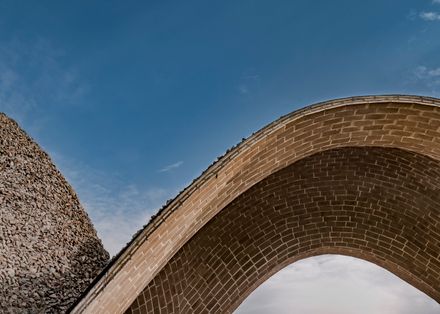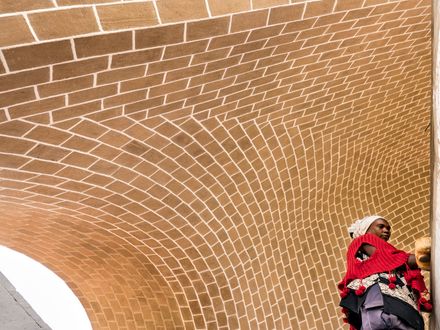Rwanda Cricket Stadium
PROJECT ARCHITECT AT TENDER AND ARCHITECT
Ben Veyrac
ENGINEERING SUPPORT
Oliver Hudson
PARTNER&VAULTS LEAD
Michael Ramage
MANUFACTURERS
Tensar Corporation, Pan Mixers South Africa, SKAT Consulting
PROJECT LEAD ARCHITECTURAL ENGINEER / ON SITE LEAD
Ana Gatóo
FORMWORK DESIGN
Wesam Al Asali
PARTNER AND LEAD
Tim Hall
PROJECT INCEPTION ARCHITECT
Killian Doherty
PHOTOGRAPHS
Johathan Gregson, Light Earth Designs, Paul Broadie
AREA
650 m²
YEAR
2017
LOCATION
Kigali, Rwanda
CATEGROY
Stadium
The project is part of work undertaken by Light Earth Designs for the Rwanda Cricket Stadium Foundation over a 5-year period on how Rwanda can transition from an agriculture-based economy to development using local labor-intensive construction techniques, thereby avoiding imports, lowering carbon, and building skills and economies.
The primary enclosure of the cricket stadium, the vaults, adapts ancient Mediterranean tile-vaulting (using compressed soil-cement tiles) to a moderate seismic context by using geogrid reinforcing in the layers and bearing the springing points of the curved vaults on the ground.
The vaults follow the natural resolution of forces toward the ground, closely mimicking the parabolic geometry of a bouncing ball and evoking the cherished hilly topography of Rwanda.
The masonry vaults are completely in compression allowing the use of a simply layered thin shell composite of low strength tiles.
The tiles are produced on site from the local soil by low skilled and skilled locals - hydraulically pressed with a small addition of cement and do not require firing. They are laid in layers onto a temporary timber skeleton which spans up to 16m.
Geogrid is added to give some seismic protection, developed by research in architecture and engineering at Cambridge University.
The shells are waterproofed then topped with local broken granite, blending into the natural palate while the granite adds weight and stability.
Simple, efficient and thin concrete tables are inserted into the vaults, providing space for the more enclosed functions: the service areas, the changing rooms, an office and a restaurant.
These tables are topped with natural Rwandan agro-waste-fired tiles made of commonly found wetland clay.
The open mezzanines - a bar and a clubhouse - enjoy wonderful raised clear panoramic views over the Oval and wetland valley beyond.
Bricks are used to define edges and spaces - often laid in perforate bond - allowing the breeze and light to filter through.
These bricks are sourced from enterprises set up by Swiss NGO SKAT Consulting and are also low carbon agro-waste-fired bricks using high-efficiency kilns, further reducing energy and carbon.
The plywood rectangles used to press the tiles are reused as countertops while timber and plywood from the vault guide work are made into joinery and doors, ensuring that a maximum of waste material goes into primary production.
Local slate is configured to allow rainwater to permeate and infiltrate the soil.
Retaining walls are either local granite boulders or are hollow to encourage planting The banking creates a wonderful natural amphitheater with great views of the pitch and wetland valley beyond.
Whilst the language of the building speaks about progression and dynamism through extreme structural efficiency, the materials speak of the natural, the handmade and the human. It is a building made by Rwandans using Rwandan materials.
The imperfections are celebrated - they are human and beautiful - and when combined with the layering of natural textures the building becomes imbues and celebrates this wonderful place.












































